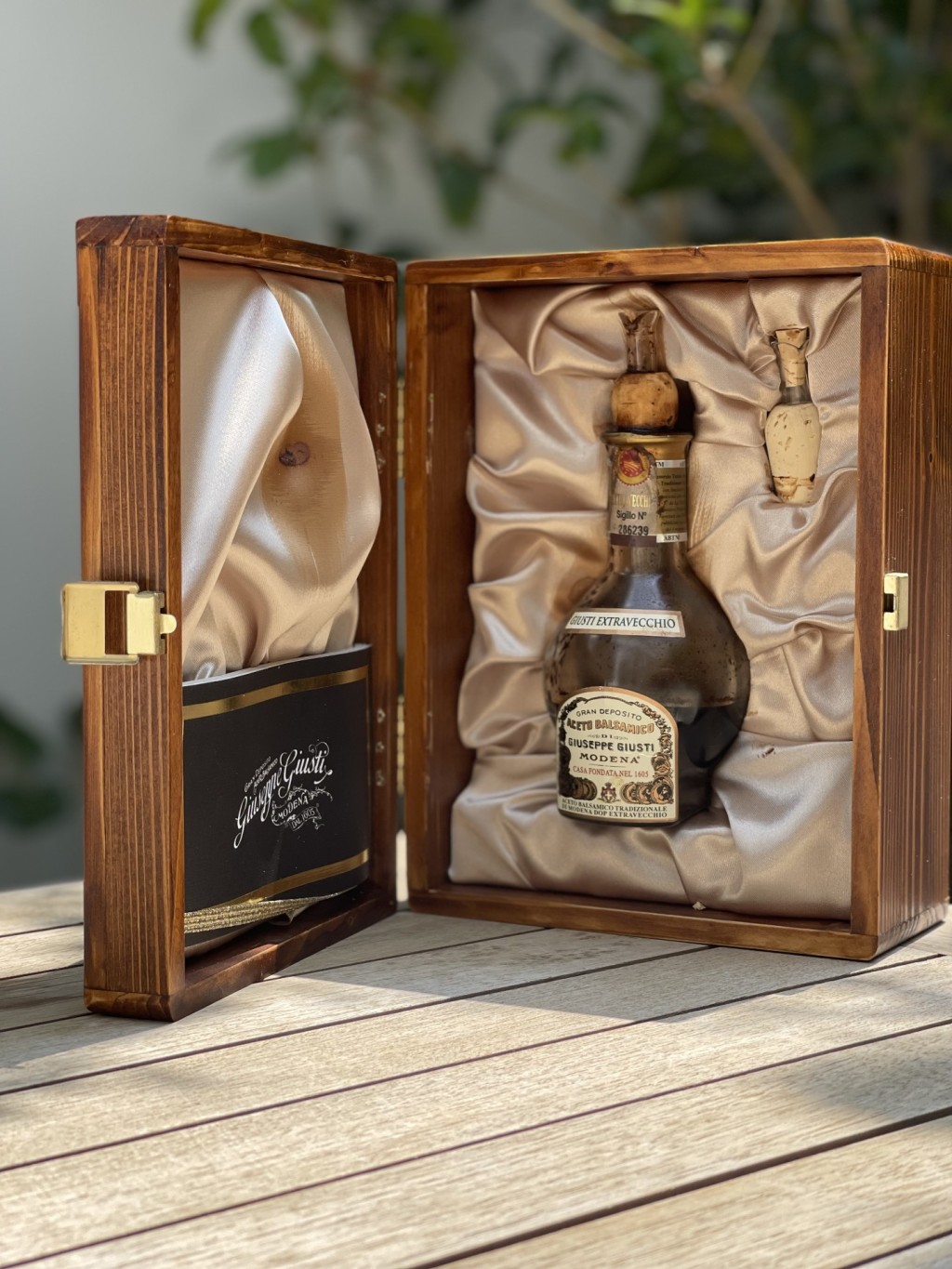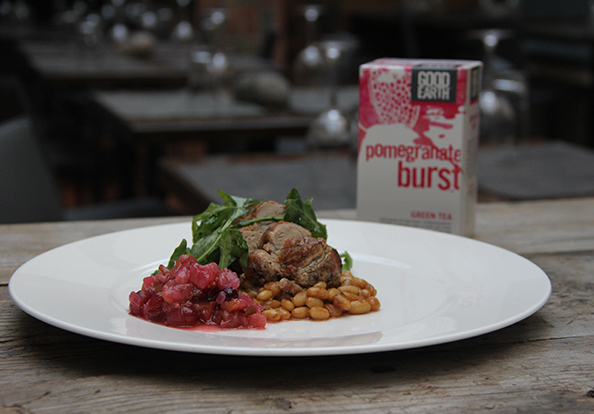Balsamic Vinegar: A Journey through History and Excellence
Balsamic vinegar is a treasured culinary delight that has been enchanting taste buds for centuries. With its distinctive sweet and tangy flavor, this dark, syrupy elixir adds depth and complexity to a wide range of dishes. But what is the story behind balsamic vinegar, and what qualities make it so special?
The Ancient Roots
Balsamic vinegar origin can be traced back to ancient Rome where it was known as “balsamum” or “balsamite.” It was initially used for medicinal purposes due to its alleged healing properties. The Romans believed that balsamic vinegar could cure various ailments, and its use was prevalent throughout the Roman Empire. The name “balsamic” derives from the healing properties when it was used as a remedy to treat sores, or for migraines.
During the Renaissance period, balsamic vinegar’s reputation continued to grow in Italy, particularly in the cities of Modena and Reggio Emilia. Historical records suggest that balsamic vinegar was offered as a gift to emperors and royalty. Notably, it is said that the Duchess of Modena gifted a barrel of balsamic vinegar to Catherine de Medici, the queen of France, during the 16th century. This gesture further elevated the status of balsamic vinegar as a symbol of prestige and luxury.
The production and consumption of balsamic vinegar associated with aristocracy and nobility, became a highly sought-after condiment among the elite. The barrels used to age the balsamic, are stored in attics, where the vinegar can age undisturbed and benefit from seasonal temperature fluctuations. It is said that the aging process would be a well-guarded secret, with families passing down the knowledge only to the next generation, creating a sense of mystery and exclusivity around this prized condiment. The tale goes that each family in Modena or Reggio Emilia would have its own set of barrels, and as a daughter would marry and move to her new home, her family would gift her with a small barrel containing a bit of their own aged vinegar to start her own collection and continue the tradition.
Today, some balsamic vinegar producers still follow traditional methods, cherishing the heritage that makes this product so special.
There are 2 kind of balsamic vinegar: the IGP (Indicazione Geografica Protetta), which in English translates to Protected Geographical Indication and the DOP (Denominazione di Origine Protetta) which translates to Protected Designation of Origin. Two product variants that differ in terms of production processes and raw materials. Both types have a certification that safeguards both their identity and quality, and a disciplinary that keeps the tradition intact. From the choice of grapes to the aging process, we are faced with two completely Italian products, regulated at European level to guarantee consumers the certainty of purchasing a product of the highest quality. But what are their differences?
The differences between these two kinds of balsamic vinegar lies in their geographical indications, production methods, kind of grape used, and quality standards.
The IGP Balsamic Vinegar (Protected Geographical Indication) has specific production guidelines, but they are generally less stringent than those of DOP balsamic vinegar.
The IGP balsamic may include a blend of different grape varieties that come exclusively from the Lambrusco, Sangiovese, Trebbiano, Albana, Ancellotta, Fortana and Montuni vines. The grapes are pressed entirely including the skin, seeds and stems, process which is not allowed in DOP balsamic vinegar production.
The IGP balsamic is obtained from partially fermented and/or open flames cooked and/or concentrated grape must.
At least 10% wine vinegar that is at least 10 years old are added to the must.
The concentration is continued until the initial mass of must has reached its ideal density at a temperature of 20°C. In addition to the vines mentioned above, the musts – exclusively cooked and concentrated ones – must have a minimum total acidity of 8 g/kg and a minimum net dry extract of 55 g/kg. The addition of any other substance is prohibited.
The preparation of the IGP Balsamic takes place with the classic method of acidification through the use of selected bacterial colonies. The next phase is the refinement which takes place inside barrels made of precious wood, such as oak, chestnut, mulberry or juniper. The minimum refinement period is 60 days, counted from the moment in which the raw materials, mixed together in the right proportion, are sent for processing. At the end of the refinement, the product obtained is subjected to an analytical and organoleptic examination, entrusted to a group of expert technicians and tasters: this is the step to be overcome in order for the product to be certified as Balsamic Vinegar IGP.
Aging
After 60 days of aging in wooden barrels, the Balsamic Vinegar can undergo a further aging period. If this phase lasts for more than three years, the finished product will be able to boast the “aged” classification.
Packaging
The Balsamic Vinegar of Modena thus obtained can be placed for direct consumption. It is placed in glass, wood, ceramic or terracotta containers of various capacities.
Labeling
The wording Balsamic Vinegar of Modena is placed on each package, accompanied by the IGP (Protected Geographical Indication) certification mark and if the product has been aged for more than three years, the wording “Aged” also appears on the label. Producers associated with the Protection Consortium are permitted to use the Consortium logo on the label.
Flavor Profile
IGP balsamic vinegar tends to have a milder flavor compared to DOP balsamic vinegar due to its shorter aging period and different production methods. It’s best used as condiment for salads, to make homemade glaze, or used to be cooked with different kind of meats.
Balsamic Vinegar DOP (Denominazione di Origine Protetta) ricetta originale Protected Designation of Origin original Recipe.
This balsamic vinegar is produced with a tightly regulated production methods and must meet strict quality standards. DOP balsamic vinegar can only be produced with grapes in two specific regions of Italy: Modena and Reggio Emilia. The grape predominantly derived from 2 specific varieties such as Trebbiano and Lambrusco.
Production Methods
DOP balsamic vinegar lies in its elaborate production process. The key to its exquisite taste is the careful selection and handling of the grapes. Grape is scrupulously selected, freshly crushed and the grape juice contains no skins, seeds, and stems. The must is boiled for several hours in open vessel containers at a temperature never lower than 80°C, before being poured into the “mother barrel”. Here it finds an ideal environment for alcoholic fermentation and the following acetic fermentation. After two years, the cooked must, which has now become a thick and dark liquid, is transferred to the largest of the battery’s wooden barrels,
which play a pivotal role in defining balsamic vinegar’s profile. The battery of barrels can vary in number and they are usually made from different types of wood, such as oak, cherry, chestnut, mulberry, fig, juniper, and ash tree. Each type of wood contributes its own distinct nuances to the final product. Each producer uses a different wood sequence of these barrels as their own exclusive “recipe” to make their unique vinegar.
The barrels are in different sizes, the biggest is for the fresh must and the smallest is where the final product is extracted. Every year, during the cold season, a quantity of product suitable for the final use is taken by hand from the smaller barrel, using the transfer technique, and at the same time this is replenished with that of the previous and more capacious barrel, through an operation called topping up. These operations are essential so that all those natural transformations can take place which will allow the final product to reach the harmony between flavors and aromas that make the Traditional Balsamic Vinegar of Modena D.O.P. an inimitable product. The experts are authorized by the Ministry of Agricultural and Forestry Policies (MIPAAF) and taste the product certified producers want to commercialize, authorizing its bottling only after a careful and rigorous organoleptic examination which verifies its visual, olfactory and gustatory aspects. All this takes place in the maximum anonymity of the sample to guarantee its impartiality.
Because of this transferring process as the vinegar ages, it’s impossible to determine an exact age of the balsamic.
The minimum aging period, required by the production disciplinary of Traditional Balsamic Vinegar of Modena PDO, is 12 years.
The real Balsamic Vinegar of Modena DOP can only be bottled in the typical 100 ml cruet designed by designer Giorgetto Giugiaro.
Flavor Profile
DOP balsamic vinegar is renowned for its rich, intense, and complex flavor profile, with a perfect balance of sweetness and acidity.
Balsamic vinegar elevates dishes to new heights, making it an indispensable ingredient in any discerning chef’s kitchen. It is incredibly versatile in the kitchen, since it enhances meats, elevates fruits, and pairs excellently with cheeses and desserts, my personal suggestion is to put few drops on top of a vanilla ice-cream scoop and pair it with a warm slice of apple pie.
So, the next time you savor this dark, velvety treat, remember the centuries of tradition and craftsmanship that have made balsamic vinegar one of the world’s most cherished culinary gems.
Health Benefits
Balsamic vinegar IGP or DOP, offers several potential health benefits, thanks to its natural properties and the presence of certain compounds. However, it’s important to remember that these benefits are associated with moderate consumption as part of a balanced diet.
Balsamic vinegar is rich in antioxidants, such as polyphenols, which help protect the body’s cells from oxidative stress caused by free radicals. Antioxidants play a role in reducing inflammation and lowering the risk of chronic diseases. Also the polyphenols in balsamic vinegar may help reduce LDL cholesterol levels, often referred to as “bad” cholesterol, which can contribute to heart disease when elevated. When consumed in moderation, it may promote a healthy digestion. In fact the acetic acid in vinegar has been shown to enhance the body’s ability to absorb essential minerals from the foods we eat. Some studies also suggest that balsamic vinegar may help improve insulin sensitivity and regulate blood sugar levels. This can be beneficial for individuals with type 2 diabetes or those at risk of developing the condition. Balsamic vinegar is low in calories and can add flavor to dishes without adding excessive amounts of sugar or fat. Using balsamic vinegar as a dressing on salads and vegetables can help enhance their taste without significantly increasing calorie intake. Acetic acid, a key component of balsamic vinegar, has been shown to possess antimicrobial properties that may help inhibit the growth of harmful bacteria.
Important Considerations: While balsamic vinegar does offer potential health benefits, it is essential to use it in moderation. Balsamic vinegar, like all types of vinegar, is acidic, and excessive consumption may lead to dental enamel erosion or digestive discomfort in some individuals.
As with any dietary change or supplementation, it’s always best to consult with a healthcare professional, especially if you have any underlying health conditions or concerns about incorporating balsamic vinegar into your diet.
Since there are a lot of Balsamic Vinegar in commerce, it is very important to look for the original kind when you are in your favorite local food store or supermarket, so make sure you look for the IGP mark on the label and of you want to buy the Original Recipe one, get only the one in the unique 100ml bottle which has also printed all the certification and the DOP mark on the label. My personal suggestion is to avoid buying the already made glaze especially the ones in the squeezable bottles, they are usually products made with artificial flavors, chemicals, and containing a lot of sugar, so if you want to have a good and flavored glaze here is an easy recipe for you to make at home.
Ingredients
200 ml balsamic vinegar IGP (do not use the DOP original recipe, it would be a waste of this precious product)
25 gr Honey
50 gr Sugar
15 gr Corn starch
50 ml Red wine (a good kind not the one in a carton)
Preparation
Put the balsamic vinegar, sugar and honey in a saucepan. Then place on the heat and as soon as it comes to a boil, lower the heat and cook for 6/7 minutes.
Meanwhile, dissolve the cornstarch in the red wine, mixing it very well to avoid lumps. Once your balsamic vinegar has boiled for at least 7 minutes and the sugar has dissolved, add the wine, mix very well for a few minutes to incorporate everything. Continue to cook until you have a thick and full-bodied balsamic vinegar glaze, stir occasionally to prevent it from settling on the bottom and burning.
Adjust it to your desired consistency, if you like it more thick or more liquid, think that it has to slip off the spoon to season your dishes. Finally, remove your balsamic vinegar glaze from the heat, place it in an airtight jar and let it cool completely before putting it in the fridge.
I hope you enjoyed this article and I invite you to write me for more recipes and comments to attilio.borra@fbmagazine.co, This is it for now, until next time, I’ll see you in the Kitchen. Ciao.
Read Also: Timothy Caspare Named Executive Chef at The Vanderbilt








